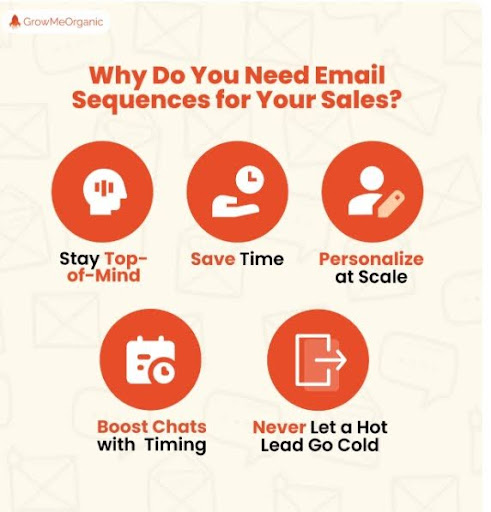Last week, Sarah, a VP of Sales at a fast-growing company, reached out to me. She was frustrated.
Her team sent out 500 emails a day for their B2B outreach, but their response rate was just 0.8%. “The more people we try to reach,” she said, “the more generic our messages get.”
Sarah’s problem is very common. Many sales teams struggle to send a high volume of emails while making each one feel personal.
Sending out generic email blasts wastes time and hurts your brand. It forces you to send even more emails just to get a few replies.
This problem is even harder to solve with new rules like GDPR and all the data available from places like LinkedIn.
Youtube Link-
GDPR explained: How the new data protection act could change your life
The statistics are harsh. Salespeople often spend two to three hours a day just researching and writing emails.
For a team of ten people, that’s up to 30 hours of work every day. Even with more prospect data than ever before, most teams still struggle to use that information to create personalized messages at a large scale.
The solution isn’t to choose between sending a lot of emails or making them personal. The answer is to create a system that does both.
Step 1: Start with Smart Targeting and Research
Many sales teams send the same general message to everyone, from a CEO to a junior analyst.
This leads to low response rates and wasted effort. Smart audience segmentation is the practice of grouping prospects into smaller lists based on things like their industry, company size, and job role,this makes your messages focused and relevant.
Every industry has its own language and rules. For example, a finance company deals with different rules than a manufacturing company.
When you customize your messages to fit an industry’s specific challenges, you can increase response rates by as much as 40%. The secret is knowing about industry trends and common problems. Talking about GDPR updates with a European SaaS company or supply chain issues with a logistics firm quickly builds trust.
GrowthToolkit makes this research faster and easier. Instead of spending hours searching for each prospect, you can quickly find key decision-makers and understand how companies are structured.
With GrowthToolkit’s B2B prospecting tools, you can find information that helps you create personalized messages:
- Recent funding or acquisitions
- Technology and tools they use
- Company growth trends
- Important staff changes
This information helps you write messages that feel relevant, not generic.
Youtube Link-
Find Verified Emails & Phone Numbers for Any Company in Seconds | GrowthToolkit.io Demo Walkthrough
It helps you build and update your prospect lists by showing which companies are most likely to respond based on their behavior. This way, your outreach is focused on people who are ready to listen.
Role-based targeting means creating messages that directly speak to each person’s job and challenges.
-
- A CFO cares about a return on investment.
- A VP of Sales wants to know how to speed up the sales process.
- A CTO focuses on technical setup and security.
The best approach is to combine several factors: industry + company size + role + current issues. This creates smaller groups for highly targeted messages without you having to personalize every single one.
When your segmentation is done right, personalizing messages at scale becomes both possible and profitable.
Step 2: Use AI to Write Emails that Sound Human
Many sales teams want to reach more people but are afraid of sounding robotic. The answer isn’t to choose between speed and authenticity. It’s to use AI to help with your writing, not to replace your voice.
The trick is to see AI as a smart research partner that helps you write faster. When I work with teams, I always stress one thing: the technology should boost your ideas, not take them over completely.
Writecream’s ChatGenie is the best tool for this. Unlike basic AI tools that create generic content, ChatGenie lets you add specific details about your prospect.

This produces emails that sound real and feel like they came from someone who knows the recipient.
Here’s how successful teams use it:
- You Give Clear Details: The better the information you give ChatGenie, like a company’s problems or recent news, the better and more relevant the content it creates will be.
- It Creates Templates with Variables: Instead of writing new emails every time, you can create smart templates that ChatGenie adjusts based on the prospect’s information. This keeps your messages consistent while making each email personal.
- You Add Your Own Touch: Use ChatGenie to come up with different subject lines or opening phrases. Then, you can add your own style and details that only a person would know.
The real benefit comes when you mix AI speed with human judgment. I’ve seen salespeople reach out to three times more people daily while keeping their response rates high because their messages were more relevant and timely.
ChatGenie also works in over 75 languages, so you can keep your personal touch even when you enter new international markets.
I’ve helped companies launch in three new countries at once by quickly creating culturally appropriate content.
The goal isn’t to hide that you use AI, the goal is to use it so well that people can’t tell the difference. Your audience cares about how relevant and valuable your message is.
Step 3: Use Multiple Channels for Better Results
Many sales teams make the mistake of only using email. The problem is that most B2B buyers need 7 to 13 contacts before they decide to buy. If you only use email, you miss out on most of your chances.
Using multiple channels is no longer an option—it’s essential. The best teams use email as a base, not the whole strategy. They use LinkedIn to build relationships and email to share detailed offers.
The LinkedIn and Email Team-Up
Using LinkedIn automation with well-planned email sequences creates a “trust funnel.” A LinkedIn connection request shows you’re a real person.

The follow-up message on LinkedIn feels like a natural conversation. Then, your emails can share detailed case studies and return-on-investment information.
This method can boost response rates by 340% compared to using only email.
GrowMeOrganic’s platform makes this simple. Its LinkedIn automation can start an email sequence based on how many connection requests are accepted.
When someone accepts your LinkedIn invite, they automatically get added to an email series that mentions your LinkedIn chat. Everything is tracked in your favorite CRM.
GrowMeOrganic’s database has over 575 million professionals, including information on how they like to be contacted.
This helps you decide which channel to use first for each prospect. For example, top executives often prefer LinkedIn for first contact, while middle managers respond better to direct emails.
The platform can also connect LinkedIn actions with email triggers. If someone looks at your LinkedIn profile after getting an email, it’s a strong sign they’re interested, and you can follow up right away.
Step 4: Use Data to Find Your Hottest Prospects
How do you know which prospects need your most personalized attention? The answer is behavior-based segmentation and using data. Lead scoring is a system that gives a score to each prospect based on how likely they are to buy.
This score is created by tracking all their actions and interactions.
Your prospects show what matters to them through what they do. If someone opens three emails about your pricing but skips the ones about features, it shows where they are in the buying process.
When a prospect visits your case studies page twice in one week, it means they are more interested than someone who just downloads a general whitepaper.
Lead scoring turns these actions into useful information. I’ve seen teams boost their conversion rates by 40% just by focusing their personalization efforts on prospects who show real interest.
Youtube Link-
Lead Scoring EXPLAINED: Master the Art of Prioritizing Prospects and Closing More Sales
GrowMeOrganic’s system simplifies this and makes it easy to use on a large scale. It tracks many types of engagement:
- How often emails are opened and links are clicked
- How frequently someone visits your website
- Views of your LinkedIn profile and accepted connection requests
- How quickly people reply
- Whether they download your documents
Each action is given a score based on how likely it shows buying interest. For example, if a prospect opens your email, clicks on the pricing page, and checks your LinkedIn profile within 24 hours, they are automatically marked as a high priority.
This system lets you tailor your approach based on how engaged people are:
- Highly engaged prospects get detailed, personal messages.
- Medium-engaged prospects receive educational content to encourage them to engage more.
- Less-engaged prospects stay in your automated sequence until they show more interest.
The main point is this: personalizing your messages without a clear focus just creates costly distractions.
By combining behavioral data with smart scoring, you can put your personal efforts where they matter most.
Your Roadmap to Success
Here is a simple roadmap to get started with these tools:
- Find the Right People with GrowthToolkit: Start by using GrowthToolkit’s prospecting tool to find potential customers. Create three clear target groups based on company size, industry, and buying stage. Find the key decision-makers in each group.
- Create Content Quickly with ChatGenie: Use Writecream’s ChatGenie to create message templates for each group. I’ve seen teams cut their content creation time by 70% while making messages feel more personal.
- Automate and Personalize with GrowMeOrganic: Use GrowMeOrganic’s email and LinkedIn sequence automation to send your content. Set up its lead scoring system to find your top prospects who need a personal review before any automated follow-ups are sent. I always tell my teams: automation should support human judgment, not replace it.
The biggest mistake is thinking automation means you can just set it and forget it. Make time each week to review your work and change your approach based on what you learn.
Your prospects can spot generic automation. The best B2B email strategy mixes the power of tools like these three platforms with a personal touch that builds real business relationships.
Conclusion
Many sales teams struggle with choosing between reaching a large audience and making their approach personal. But you don’t have to pick just one anymore.
The method we’ve discussed turns cold outreach from just sending a lot of messages into a smart, targeted tool.
I’ve seen teams increase their response rates by 300% while cutting manual work by 80%. The trick is using these tools together as one system, not separately.
Your prospects can tell the difference between generic spam and a thoughtful message. They respond better to honest, relevant communication.
The teams that succeed at growing their B2B email outreach without losing personalization will lead their markets.
The real question isn’t whether you can afford to try this approach—it’s whether you can afford not to. Your competitors are already moving this way.
Start with one tool. Learn how to use it well. Then grow step by step.
